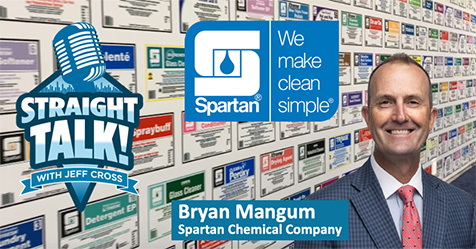Coronavirus Government Response Update—House Passes $484 Billion Coronavirus Relief Bill
Welcome to the Coronavirus Government Response Update. This information is intended to keep ISSA members up to date on fast-moving government affairs related to the COVID-19 pandemic, as well as other public policy issues important to the cleaning industry. Today’s update touches on the House passing additional coronavirus relief funds, the U.S. Environmental Protection Agency (EPA) Assistant Administrator’s message to ISSA members, the EPA providing information about safe disinfectant use, and more.
House Gives Final Passage to $484 Billion Coronavirus Relief Bill
The U.S. House of Representatives passed a nearly US$500 billion interim coronavirus bill that includes additional money for the small business loan program, as well as for hospitals and testing, making way for the legislation to become law. The bill passed by a 388-5-1 bipartisan vote.
EPA Assistant Administrator’s Message for ISSA Members
EPA Assistant Administrator for Chemical Safety and Pollution Prevention Alexandra Dapolito Dunn pre-recorded a message especially for ISSA members in lieu of her participation in the association’s postponed March 2020 Clean Advocacy Summit. Given the immense need due to the novel coronavirus crisis, EPA’s Antimicrobials Division is working to approve disinfectants for use against COVID-19. As of this week, there will be 392 products on List N (the agency’s list of disinfectants to use against SARS-CoV-2, the virus that causes COVID-19) and 96 products that went through the expedited review process. Find more information on List N here.
EPA Provides Critical Information about Safe Disinfectant Use
When using an EPA-registered surface disinfectant, the agency cautions to always follow the product’s directions and remember:
- Never apply the product to yourself or others. Do not ingest disinfectant products. This includes never applying any product on List N directly to food.
- Never mix products unless specified in the use directions. Certain combinations of chemicals will create highly toxic acids or gases.
- Wash the surface with soap and water before applying disinfectant products if the label mentions pre-cleaning.
- Follow the contact time listed for your product on List N. This is the amount of time the surface must remain visibly wet to ensure efficacy against the virus. It can sometimes be several minutes.
- Wash your hands after using a disinfectant. This will minimize your exposure to the chemicals in the disinfectant and the pathogen you are trying to kill.
One in Six Americans Has Lost Their Job during the Coronavirus Pandemic
About 4.4 million Americans applied for unemployment benefits last week, raising the total number of workers who have lost their jobs since the coronavirus outbreak to more than 26 million. The fallout has left roughly one in six workers without a job, a number that dwarfs the Great Recession’s impact on the U.S. labor market.
Other links of interest
- Take Action Now—Urge Your Elected Officials to Support the Clean Start: Back to Work Tax Credit
- ISSA Recording: How U.S. Governments Are Responding to COVID-19-Update (April 15, 2020, recording is for members only)
- ISSA Coronavirus Government Response FAQ
- EPA Coronavirus (COVID-19)
- U.S. Department of Labor: COVID-19 and the Workplace

